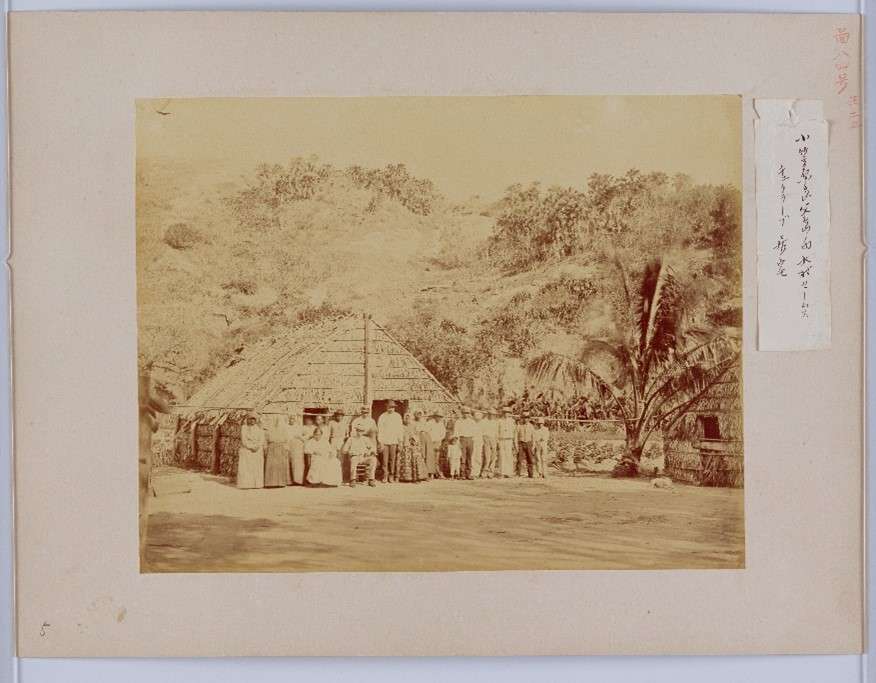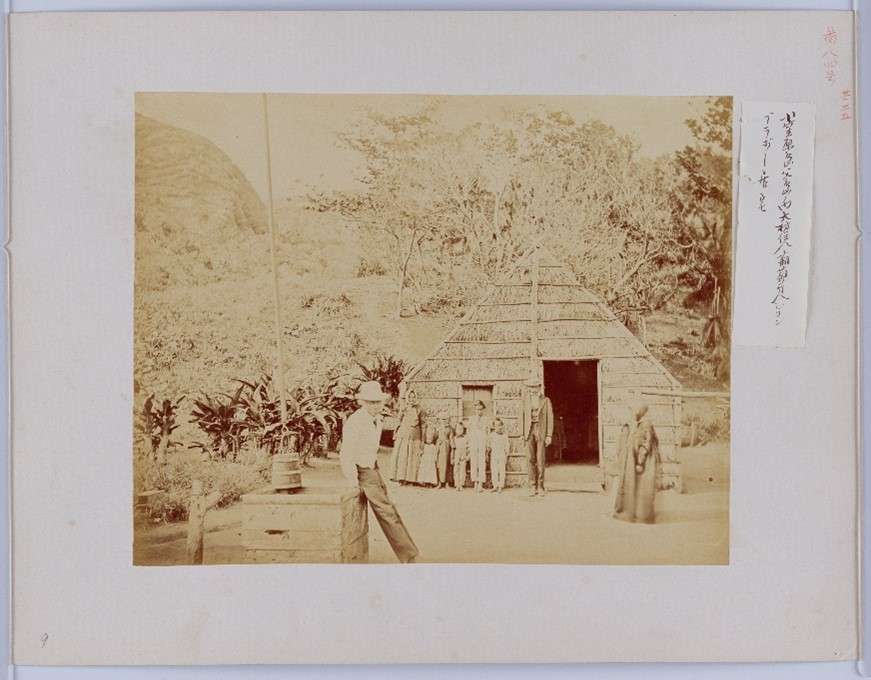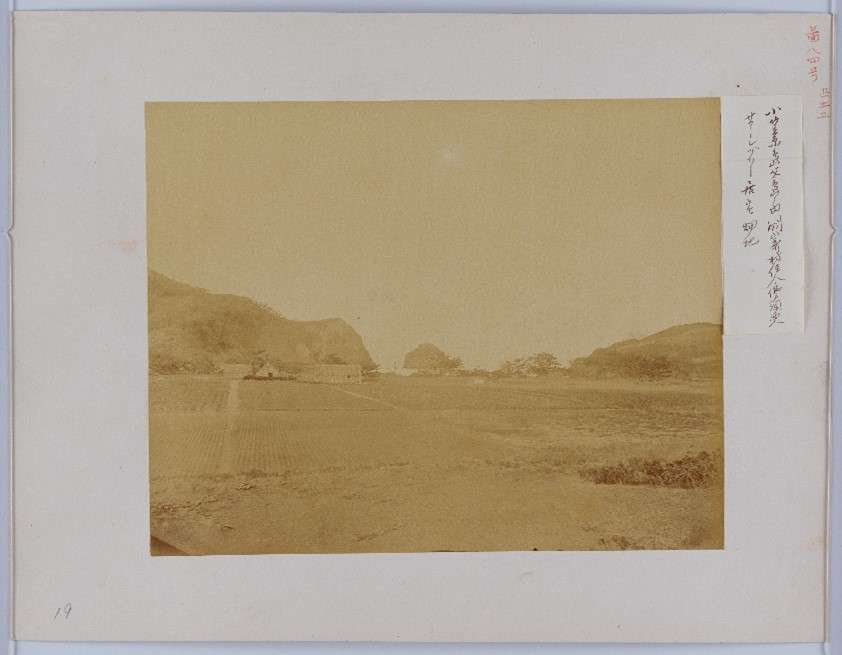The migrants from the Japanese mainland and Hachijojima followed suit, building huts and living in dwellings with roofs thatched using chusan palm leaves. Later on, houses increased which featured wooden floors covered in rushes (imushiro: woven rush mats), with living quarters and cooking area located in separate buildings. Houses with pillars made of mulberry or hibiscus hamabou wood and roofs covered with chusan palm leaves were unique to the Ogasawara Islands, but they were susceptible to storm damage and wood became scarce, leading to an increase in houses with zinc or slate roofs, as on the Japanese mainland. (Ref. 2)
Omura home in Chichi-jimas (1875) (Ref. 3)
Repository: National Archives of Japan
Foreigner’s residence in Chichijima (1875) (Ref. 3)
Repository: National Archives of Japan
Foreigner’s residence in Chichijima (1875) (Ref. 3)
Repository: National Archives of Japan
Directly after the reversion of the islands the native islanders had their own homes, but the former islanders who returned to the islands lived communally in shared prefabricated dormitories. National and local government officials lived in official residences taken over from the U.S. military. (Ref. 4)
By fiscal year 1978, 240 units of Tokyo Metropolitan Ogasawara Housing (government-built housing) had been constructed on Chichijima and 90 units on Hahajima in order to encourage the return of former islanders and improve living infrastructure. In addition, meeting places, storage spaces, parking spaces, and communication spaces, etc., were developed as part of the community facilities. Currently there are approximately 300 units of Ogasawara Housing on Chichijima and 100 units of those on Hahajima, which are home to approximately 26% of all households. (Ref. 5)

Ref. 1: Francis L. Hawks (compiled by), Narrative of the expedition of an American squadron to the China seas and Japan, performed in the years 1852, 1853, and 1854, under the command of Commodore M. C. Perry, United States Navy, Washington: A. O. P. Nicholson, 1856, p.200.
Ref. 2: An outline of Ogasawara Islands (Tokyo Prefecture, 1929), p. 190
Ref. 3: “Photos of the Ogasawara Islands,” Pictures accompanying [Kobun Roku], a compilation of public records, No. 84 (1875), reposited at the National Archives of Japan
Ref. 4: Nanpo Doho Engokai, Ogasawara no genkyo: Fu Ogasawara henkan no kiroku (Current Situation of Ogasawara: Record of the Reversion of Ogasawara), 1969, p. 29.
Ref. 5: Tokyo Metropolitan Ogasawara Branch Office, Kannai Gaiyo (Overview of the Jurisdiction), 2019 ed., pp.140-142.


 RSS
RSS



Info Library
Japan's Island Territories
Senkaku Islands Facts & Figures
Takeshima Facts & Figures
Northern Territories Facts & Figures